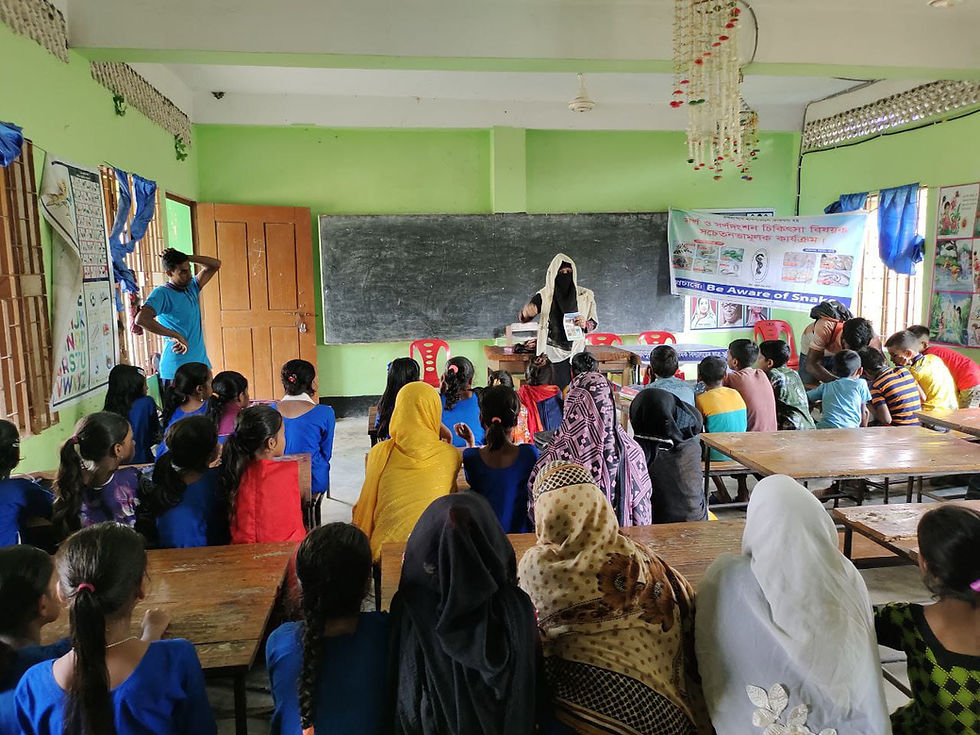Birdwatching For Kids
- Symrna Darkmorph

- Mar 12
- 3 min read
Updated: Apr 18

Birdcalls fill the air, a flash of vibrant colour catches your eye, and suddenly, the world around you feels a little more magical. Birdwatching, or birding, is a simple yet profoundly rewarding activity that can captivate people of all ages, especially children. It's a gateway to nature, a chance to connect with the wild, and a fantastic way to foster a lifelong love for the natural world.
What is Birdwatching?
At its core, birdwatching is simply observing birds. It involves identifying different species, learning about their behaviours, and appreciating their beauty. It can be as casual as noticing a robin in your backyard or as involved as trekking through a forest to spot a rare owl. Birdwatching is accessible to everyone, regardless of age or experience. All you need is a pair of eyes (and perhaps some binoculars!), a sense of curiosity, and a willingness to slow down and observe.
So is it just looking at the birds randomly? Well , not quite. It's more than just looking at birds; it's about developing an awareness of the intricate web of life around us. Learning to identify birds by their calls (sounds they make), plumage (feathers), and flight patterns encourages keen observation and develops a deeper understanding of ecology. This awareness can spark a lifelong appreciation for biodiversity and conservation.

Why is Birdwatching Good for Kids?
Enhancing General Knowledge: Identifying birds and learning about their habitats, diets, and migration patterns expands a child's knowledge of the natural world. It introduces them to scientific concepts like classification, ecosystems, and animal behaviour. This knowledge can spark a passion for biology, ecology, and environmental science.
Developing Critical Thinking and Observation Skills: Birdwatching requires careful observation and attention to detail. Children learn to differentiate between species based on subtle differences in appearance and behaviour. They develop critical thinking skills by analysing clues and drawing conclusions. Is that bird a sparrow or a finch? Where is it likely to nest? These questions encourage analytical thinking and problem-solving.
Improving Motor Skills: Using binoculars, focusing on moving objects, and navigating outdoor environments help refine both fine and gross motor skills. Holding binoculars steady requires hand-eye coordination, while walking and exploring different terrains improves balance and coordination.
Reducing Stress and Anxiety: Spending time in nature has been proven to reduce stress and anxiety. The calming sounds of birds and the peacefulness of natural settings can have a therapeutic effect on children. Birdwatching encourages mindfulness and helps children connect with the present moment, fostering a sense of calm and well-being.
Fostering a Lifelong Hobby: Birdwatching can become a lifelong passion. It's an activity that can be enjoyed at any age and in any location. It encourages a connection with nature that can lead to a deeper appreciation for the environment and a commitment to conservation.

Where to Take Your Kids Birdwatching
Your Backyard or Local Park: Start close to home. Even familiar spaces can reveal surprising avian visitors. If you're in New Delhi, I highly reccomend Sunder Nursery for your first Bird walk with your child.
Nature Reserves and Wildlife Sanctuaries: These protected areas offer diverse habitats and a greater chance of spotting a variety of bird species.
Botanical Gardens: These cultivated spaces often attract a wide range of birds due to the abundance of plants and flowers.
Lakes and Wetlands: Waterfowl and other aquatic birds thrive in these environments.
Coastal Areas: Seabirds and shorebirds can be found along beaches and coastlines.
How to Prepare to Take Your Kids Birdwatching
Start Simple: Begin by focusing on common birds in your area. Use a field guide or app with pictures to help with identification.
Invest in Binoculars: A good pair of binoculars makes a world of difference. Choose lightweight, kid-friendly binoculars that are easy to focus.
Bring a Field Guide or App: A field guide or bird identification app is essential for learning about different species. I recommend an app called Merlin.
Pack Snacks and Water: Birdwatching can take time, so be sure to bring snacks and water to keep everyone energised.
Dress Appropriately: Wear comfortable clothing and shoes suitable for outdoor activities. Layers are a good idea, as the weather can change.
Be Patient and Quiet: Birds are easily startled, so encourage children to be patient and quiet.
Make it Fun: Turn birdwatching into a game by creating a checklist or playing "bird bingo." I recommend an app called Ebird.
Instill a Love for Nature: Teach children to respect wildlife and their habitats. Emphasize the importance of conservation.
Birdwatching is more than just a hobby; it's an opportunity to connect with nature, learn about the world around us, and foster a lifelong appreciation for the beauty and wonder of birds. By introducing your children to birdwatching, you're giving them a gift that will enrich their lives for years to come.





Comments